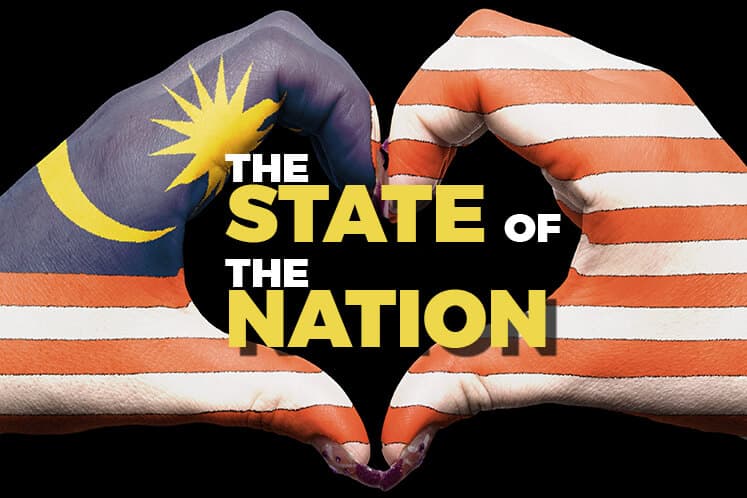
This article first appeared in The Edge Malaysia Weekly on July 2, 2018 - July 8, 2018
AS employers wait for the new directive on the minimum wage to be announced in one to two months, even more are waiting to see if the government can live up to the expectation of sharing the burden of a higher minimum wage.
Those who have drilled down to the details of the Pakatan Harapan election manifesto will remember that one of the promises — besides increasing the minimum wage to RM1,500 per month in its first term of government — is to share 50% of the expected increase in the minimum wage with employers.
The cost sharing, if it comes to fruition, will certainly be welcomed by employers, who have been hit by various additional costs, such as higher natural gas prices, in recent times. However, the move will certainly raise eyebrows.
One concern is whether the government, which is facing a mountain of debt, can afford to share that burden equally with the employers.
And above that, one wonders if sharing the burden with businesses is the right step forward as the amount could run into billions of ringgit on a yearly basis.
Socio-Economic Research Centre executive director Lee Heng Guie estimates that for the 1.65 million workers in the manufacturing sector — based on the Department of Statistics’ Salaries and Wages Report 2017 — a 50% cost sharing on the basic salary across the board will amount to RM413 million a month, or RM4.95 billion a year. This is based on the assumption that the proposed increase is RM500, equally shared by the government and employers. Nonetheless, many quarters believe that the increase will not amount to RM500 this round as the promise is to be fulfilled by the end of the Pakatan Harapan government’s first term.
Whatever the increment may be, economists concur that it will be difficult for the government to manage this additional expenditure, especially at a time when the country is trying to reduce its debt.
While sharing the minimum wage cost between the government and employers would be a positive for businesses, experts think that it is not an ideal policy.
“This subsidy will be difficult to design and hard to enforce. It could lead to significant inefficiencies for government and business. Ultimately, the government should reduce the cost of doing business through lower taxes, the simplifying of regulations and opening up of markets rather than adopting complex subsidies,” opines Laurence Todd, a director at Institute for Democracy and Economic Affairs.
Although it is not an ideal policy, he says, it is still preferable to provide support to those who are working as it incentivises work, compared with providing non-conditional welfare payments.
Foreign workers the biggest winner
Malaysian Employers Federation executive director Datuk Shamsuddin Bardan points out that such a subsidy will be equivalent to getting taxpayers to subsidise additional remittances of foreign workers, given that they are the biggest beneficiaries of the minimum wage policy.
“Before the implementation of the minimum wage policy in 2013, foreign workers remitted about RM18 billion yearly to their home countries. In 2016, the amount rose to RM34 billion, which was done via official banking services. If remittances through unofficial sources are taken into account, the figure could be double that.
“With such a huge amount being sent out, it is ridiculous for the authorities to punish employers by imposing a higher minimum wage,” he says.
He opines that more taxpayers’ money would be channelled to subsidise foreign workers’ wages.
However, some think that the government will probably not pay the portion of subsidy for foreign workers as it has no obligation to do so.
RHB Research economist Peck Boon Soon says this policy will inculcate a subsidy mentality in businesses and will not enhance the economy’s competitiveness in the long run.
Share of profit
Some quarters argue that companies should be aware of the risks of running a business, which include a potential rise in costs.
Several observers believe that the increase in the employees’ share of profit should be at the expense of their employers. This way, companies will become more competitive and innovative to grow their profits.
Supporters of this view believe that when employers put more money into their employees’ pockets, consumption will increase, thus boosting economic growth, which will eventually benefit businesses too.
However, by subsidising the increase in the minimum wage, it would be akin to artificially suppressing the real cost involved in running a business.
Labour-intensive industries, such as agriculture, construction and manufacturing, have certainly benefited from the low wage cost as many have seen their revenue grow to the millions and in some cases, billions over the years.
In a functioning market, says Todd, businesses should compete not only to sustain profits but also to hire talent, thus driving up wages.
“In the long term, the government should not subsidise wages or decide how much businesses should pay their workers. Instead, it should focus on building a stable and flourishing economy,” he adds.
Save by subscribing to us for your print and/or digital copy.
P/S: The Edge is also available on Apple's AppStore and Androids' Google Play.